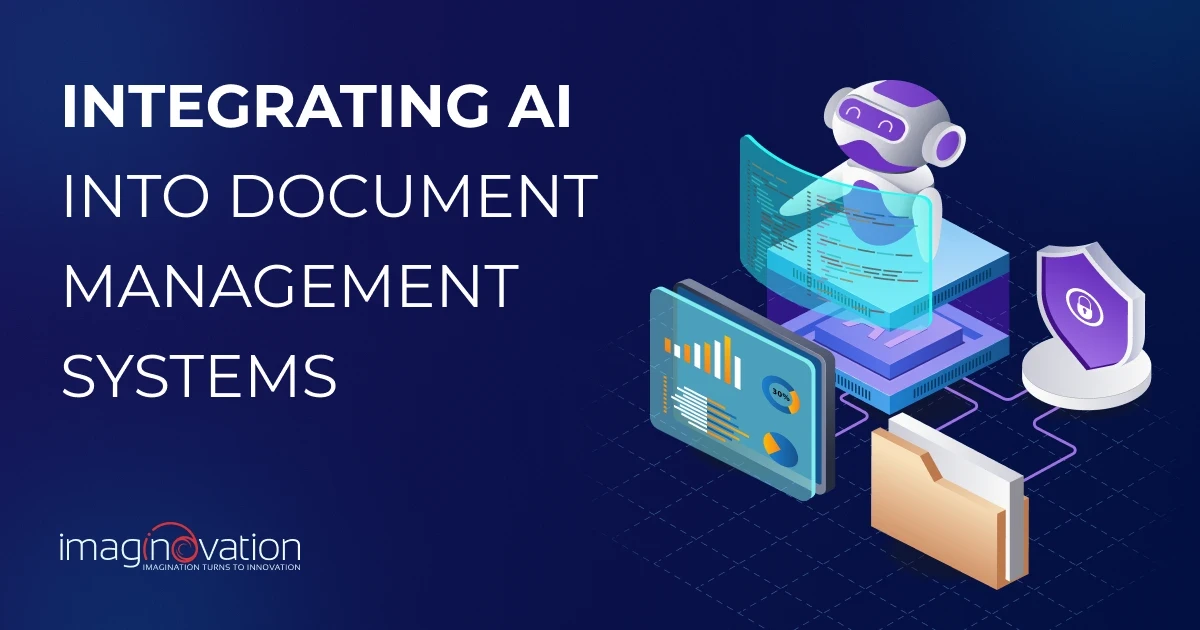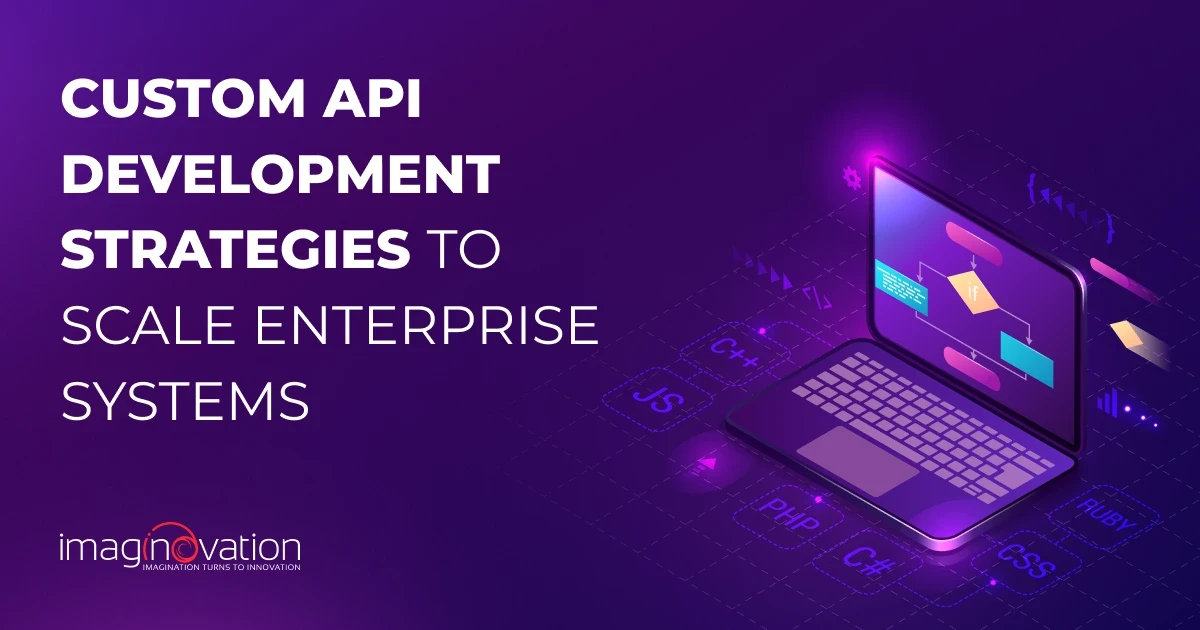Artificial Intelligence (AI) plays a catalyst in creating ripples of business opportunities. It has been transforming mobile and web applications, enhancing user experiences, and optimizing business operations.
According to IBM's Global AI Adoption Index 2022, nearly 77% of companies are either using or exploring the use of AI. It's time to consider leveraging AI to propel your business to unparalleled success.
AI app development can help unlock your business potential and is the key to standing out in a crowded market. Let's embark on the journey of building an AI app. We will explore the essential steps, costs, must-have features, and the latest trends that can help you create a robust app.
Let’s get started!
Understanding AI App Development
Imagine you’re pouring your heart into completing a task and wish for a tool that can enhance your results. This is where an AI application comes into play—a tool or platform designed to leverage AI to perform tasks, either partially or entirely. In essence, it replicates human intelligence in machines, enabling them to think, learn, and adapt.
Developing an AI app involves creating software capable of handling tasks that typically require human intelligence. To do this effectively, it’s crucial to understand the core components of AI and the vast range of applications it can power.
Essential AI Components
Understanding the key AI components is important, as it helps you grasp how these systems work. Here's a closer look:
Machine Learning
Machine Learning (ML) is an important facet of AI—it facilitates systems to learn from data, boosting their performance without any explicit programming. ML utilizes algorithms that analyze and interpret complex data patterns, enabling systems to make predictions or decisions based on the insights they derive.
The mechanism of ML includes several key approaches: Supervised Learning, where the system learns from labelled data to make predictions, such as identifying spam emails; Unsupervised Learning*,* which involves finding patterns in unlabeled data, often used for tasks like customer segmentation; and Reinforcement Learning, where the system interacts with an environment and learns through feedback in the form of rewards or penalties, commonly applied in robotics and game AI.
Deep Learning
Deep Learning is a specialized subset of ML that employs deep neural networks and processes multiple layers and learns from vast amounts of unstructured data. The approach is more effective when it comes to managing complex tasks where traditional methods may fall short.
Deep learning is very helpful in areas like speech recognition, converting spoken language into accurate text. It also facilitates the processing of images and videos, which works on the premise of identifying and enhancing patterns in visual content.
Neural Networks
Neural networks are inspired by the human brain, and work on replicating its complex network of neurons in digital form. These computational models combine cognitive science with ML, enabling AI to recognize patterns and make decisions.
Different types of neural networks serve specific purposes: For instance*—*Artificial Neural Networks (ANNs) handle basic pattern recognition like image and speech processing.
Convolutional Neural Networks (CNNs) excel in analyzing images and videos, which is crucial for facial recognition and self-driving cars; Recurrent Neural Networks (RNNs) are designed for sequential data, making them essential in language modelling and time-series forecasting. These networks are at the core of how machines learn and adapt.
Natural Language Processing (NLP)
NLP enables smooth communication between humans and machines by allowing computers to understand, interpret, and generate human language. It plays a crucial role in text analysis, helping to extract valuable insights, such as customer sentiment from reviews.
Additionally, NLP powers speech recognition, which converts spoken language into text—a key feature in voice assistants like Siri and Alexa. This technology bridges the gap between human language and machine understanding, making interactions with devices more natural and intuitive.
Computer Vision
Computer Vision enables machines to interpret and make decisions based on visual data, using advanced image processing and pattern recognition techniques. This technology empowers computers to comprehend and analyze images and videos, making them more perceptive of the world around them.
This technology drives various applications, such as image recognition for tagging photos on social media, object detection in autonomous vehicles and security systems, and image segmentation in fields like medical imaging and object recognition.
Expert Systems
Expert systems replicate the decision-making process of human experts, applying specialized knowledge and rules to solve problems in areas like medical diagnosis, financial forecasting, and customer support.
These systems rely on a knowledge base filled with domain-specific information and an inference engine that applies logical rules to make decisions. A user interface enables interaction, allowing users to input data and receive expert-level guidance or solutions.
Robotics
Robotics combines AI and mechanical engineering to create machines that perform tasks autonomously or with minimal human input, transforming industries like manufacturing, healthcare, agriculture, and logistics by enhancing efficiency and precision.
Key elements include Robotic Process Automation (RPA) for automating repetitive tasks, autonomous robots like AI-driven drones and robotic vacuums, and collaborative robots (cobots) that work alongside humans in environments such as factories and hospitals.
Fuzzy Logic
Fuzzy Logic is a reasoning method that handles approximate rather than fixed decisions, making it ideal for systems that must operate with imprecise or uncertain information.
This approach is applied in control systems, like climate control in buildings, and in pattern recognition, where it excels in identifying patterns that traditional binary logic cannot address.
Key Features of a Successful AI App
When developing your AI app, it's good to plan to incorporate features that make your AI app versatile, user-friendly, and capable of delivering value to your business operations. Here’s a list of must-have features for an AI app.
Personalized Recommendation
A personalized recommendation feature leverages user profiling, behavioral analysis, and advanced algorithms like collaborative and content-based filtering to deliver tailored content and suggestions. This feature boosts user engagement, driving higher retention rates and improved conversion outcomes.
Facial Recognition
Facial recognition in apps involves using computer vision and machine learning techniques to identify or verify a person's identity based on their facial features. It is often used for secure authentication, such as unlocking devices, verifying identity for access control, or personalizing user experiences.
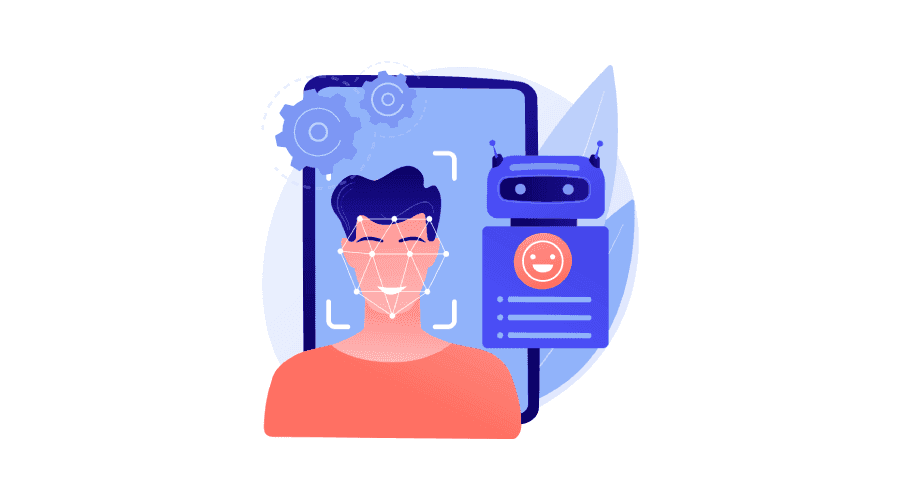
Predictive Analytics
Predictive analysis in an AI app uses historical data and machine learning algorithms to forecast future outcomes, trends, or behaviors. This feature helps by enabling proactive decision-making, optimizing processes, and identifying potential opportunities or risks before they occur. It's valuable in areas like finance for predicting market trends, in marketing for targeting customers, and in operations for demand forecasting, ultimately improving efficiency and strategic planning.
Anomaly Detection
The anomaly detection feature will help identify unusual patterns or behaviors that deviate from the norm, supporting you in quickly detecting issues like fraud, security breaches, equipment failures, or data errors. This feature enhances safety, reliability, and operational efficiency by alerting users to potential problems early, allowing for timely intervention and reducing the risk of significant damage or loss.
Health Monitoring
The health monitoring feature in an app analyzes users' health data, such as heart rate, activity levels, and sleep patterns, to provide real-time insights and personalized recommendations. This feature helps by promoting proactive health management, alerting users to potential issues early, and supporting better lifestyle choices, ultimately improving overall well-being and preventing health complications.
Chatbots and Voice Assistants
Chatbots and voice assistants in an AI app enable seamless, real-time interaction with users through text or voice. They help by providing instant support, answering queries, automating tasks, and enhancing user experience with personalized assistance, all while reducing the need for human intervention and improving efficiency.
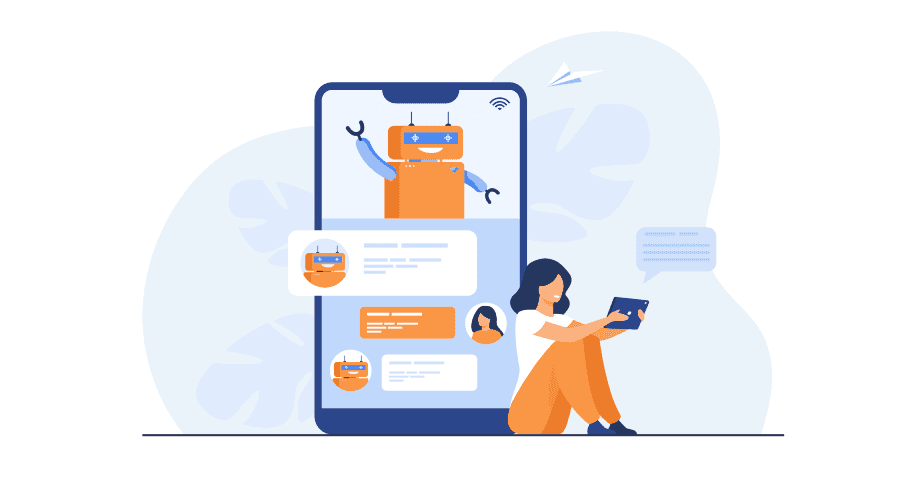
Language Translation
The language translation feature allows users to instantly translate text or speech between different languages, facilitating seamless communication and access to content across language barriers. This feature helps by enhancing global connectivity, improving user accessibility, and broadening the reach of services and information.
Sentiment Analysis
Sentiment analysis helps evaluate and interpret users' emotions and opinions from text, speech, or social media. This feature helps by providing insights into user feelings and satisfaction, enabling targeted responses, improving customer service, and guiding product or content improvements based on emotional feedback.
Security and Privacy
Security and privacy help safeguard user data through encryption and secure protocols while ensuring compliance with privacy regulations. This feature helps by protecting sensitive information from unauthorized access, preventing data breaches, and maintaining user trust by securing their personal and transactional data.
Text to Video Creation
Text-to-video creation in apps converts written content into engaging videos, automating the video production process. This feature helps by simplifying content creation, enhancing visual communication, and making information more accessible and appealing to users.
Virtual Try-On
Virtual try-on in an AI app allows users to digitally try on clothing, accessories, or makeup using augmented reality. This feature helps by enhancing the shopping experience, allowing users to visualize products on themselves before purchase, reducing returns, and boosting customer confidence in their choices.
Essential Steps to Building an AI App
Building an AI app can help you achieve a level of sophistication to help your business achieve phenomenal success. Let's look at a step-by-step guide that can help you with development.
Defining the Problem and Objectives
The first step is to have immense clarity on the specific business problem that needs to be solved. What are the results that you expect? It will help you plot down the pain points, needs, functions, processes, and your target audience for the app. You can set goals and objectives and begin your AI app development journey once the problem definition is identified.
Researching and Selecting the Right AI Technologies
It is time you start researching the AI models, algorithms, and tech stack to build your AI app. A good idea will be to plot down the pros and cons of the models and technology stack, which will help with the selection based on your app's specific needs. Here's a peek at some popular AI models.
| AI Model |
Use Cases |
| Bidirectional Encoder Representations from Transformers (BERT) |
Ideal for tasks including sentence generation, sentiment analysis, word classification, and named entity recognition |
| Generative Pre-trained Transformer (GPT)-3.5/GPT-4 |
Facilitates explainer video scripts, offers coding assistance, compiles large volumes of data, and generates content |
| Text-to-Text Transfer Transformer (T5) |
Facilitates machine translation, question answering, document summarization, and classification tasks based on converting tasks into a text-to-text format |
| Mistral |
Focuses on processing, summarizing, classifying or translating texts, enhancing text processing efficiency |
| Pathways Language Model (PaLM) |
Focuses on text generation, summarization, reasoning, code generation and analysis, content analysis, text translation |
| RoBERTa |
Utilized for sentiment analysis, market research, customer support automation, risk assessment, fraud detection |
The AI models are ever-evolving and one can explore other AI models including XLM, InstuctGPT, XLNet, Turing NLG, Bloom, Vicuna, Phi, amongst others.
Yet another significant component is AI algorithms that help define the steps required for the model. Some algorithms in this context include gradient descent, backpropagation, K-Nearest Neighbors (KNN), bayesian algorithms, amongst others.
You can shortlist the AI tech stack that you wish to use for development and deployment. You can start with getting the best-fit tech stack to build the AI app for Android or IOS. It is vital to think of the right cloud services, mobile frameworks, or AI platforms, such as AWS, Google Cloud AI, or Microsoft Azure, as they can help you develop a robust app. Here's an overview.
| Category |
Options |
| Programming Languages |
Python, R, Java/Scala |
| Libraries and Frameworks |
TensorFlow, PyTorch, Scikit-Learn, Keras |
| Data Processing |
Pandas, NumPy, Apache Spark |
| Deployment Platforms |
Docker, TensorFlow Serving, AWS SageMaker, Google AI Platform, Microsoft Azure ML, Kubernetes |
| Version Control and Experimentation |
Git, MLflow, DVC (Data Version Control) |
| Visualization Tools |
Matplotlib and Seaborn, TensorBoard, Plotly |
| Databases and Storage |
SQL Databases (MySQL, PostgreSQL), NoSQL Databases (MongoDB, Cassandra), HDFS (Hadoop Distributed File System) |
| APIs |
Flask, FastAPI, Gradio |
| Monitoring and Logging |
Prometheus, Grafana, ELK Stack |
Together, these components form the foundation for building, training, deploying, and scaling AI applications, enabling developers and data scientists to create intelligent systems that can analyze data, make predictions, and automate complex tasks.
Data Collection and Preparation
One of the cornerstones of a top-notch AI app is data collection and preparation. The quality of the data that AI models are trained with determines the success. Thus, it is important to focus on data quality, and in this context, data cleaning can help cleanse and preprocess the collected data. It will ensure that you have top-notch quality data that's essential for your AI app development.
Training AI Models
The next stage enables you to train AI models using the data that's cleansed and optimized. During the training, the models can be provided input of large datasets, with parameters that are adjusted to improve accuracy and efficiency. Some frameworks that are commonly used for training AI models include PyTorch, Keras, TensorFlow, amongst others.
Designing the UI UX
The next step is to design an interface that's user-friendly, intuitive and can captivate the user from the moment they interact with it. A thoughtfully crafted UI/UX does more than just make navigation easy—it promotes user engagement, boosts retention, and drives higher conversion rates.
Developing the App
With your data and design in place, it’s time to turn your vision into reality by developing your AI app. At this stage, your AI app development team works on both front-end and back-end development. For the front end, they craft a user-friendly interface that ensures smooth, intuitive interactions for your users.
Meanwhile, the backend work involves constructing and integrating the server-side elements, including the AI model, database management, and robust security features.
Testing and Validation
Before launching your app on your chosen platform, it's vital to conduct comprehensive testing to guarantee optimal performance and alignment with your established goals. You must plan to evaluate the app on parameters to assess its quality, security, usability, and overall functionality.
This thorough testing process should include unit tests, integration tests, User Acceptance Testing (UAT), performance tests, and security assessments. Taking these essential steps helps identify and resolve any issues, ensuring your app delivers a seamless and reliable experience upon release.
Deployment and Continuous Improvement
It’s time to launch your quality-checked app on your chosen platforms—be it iOS, Android, or the web. But the journey doesn’t end there. Post-launch, it's essential to actively monitor and maintain your AI app to ensure it continues to run flawlessly, adapting to the ever-evolving needs of users and keeping pace with technological advancements.
Cost Considerations in AI App Development
When it comes to cost considerations in AI app development, you will need to look at many key factors. The cost of building an AI app may range from $30,000 to $300,000 or more. However, this will depend on the features incorporated, the project's complexity, the selected tech stack, platform compatibility, and so on.
By carefully considering these factors and implementing cost-optimization strategies, you can develop AI applications that deliver value while managing costs effectively. Let's take a closer look.
| App Complexity Levels |
Average Timeline |
Estimated Costs |
Example(s) |
| Apps with basic AI features |
3 to 5 Months |
$25,000 to $60,000 |
AI-Powered Personal Finance Tracker, Fitness Apps, Language Learning Apps, Photo Editing App with Basic Filters, Virtual Shopping Assistant |
| Apps with custom AI features |
5 to 9 Months |
$60,000 to $150,000 |
Advanced Health Monitoring Apps, E-Commerce Apps with Dynamic Pricing, Personalized Learning Management System (LMS), and so on |
| Apps with advanced AI features |
9 to 12 Months |
$150,000 to $250,000 + |
Autonomous Drone Fleet Management System, AI-Enhanced Telemedicine Platform, Enterprise-Level AI Customer Service Platform, Smart Manufacturing and Predictive Maintenance System |
Current Trends in AI App Development
As AI continues to evolve, several key trends are shaping the future of AI app development. These innovations are driving the next generation of smart applications, allowing businesses to harness the power of AI in new and exciting ways. Let's explore the most impactful trends that are revolutionizing AI.
Convergence of IoT and AI
The integration of AI and IoT is rapidly transforming both technologies. While each has distinct functions, their combination is unlocking new and innovative possibilities. It’s no secret: IoT devices generate vast amounts of data that need to be analyzed for actionable insights. AI algorithms rely on this data to draw meaningful conclusions. By leveraging AI's capability to quickly analyze and interpret data, IoT systems are becoming more intelligent and responsive.
Autonomous Vehicles
The landscape of autonomous driving is undergoing a dramatic transformation, with giants like Samsung, Nvidia, Volkswagen, Uber, and Google's Waymo leading the charge. As these industry leaders pour billions into autonomous vehicle technology, the potential of AI to revolutionize transportation is becoming increasingly clear.
Enthusiasts believe that self-driving cars will not only reshape how we think about travel but also dramatically cut traffic fatalities, making our roads safer for everyone. With this technology rapidly advancing, the future of driving is looking both exciting and incredibly promising.
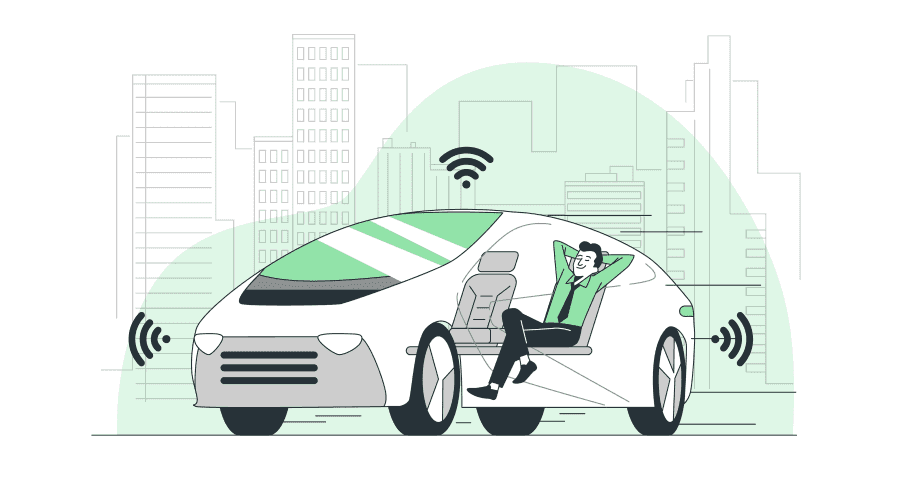
Explainable AI
As AI becomes more embedded in our lives, building trust remains a challenge due to its often opaque decision-making processes. Explainable AI addresses this by clarifying how AI models reach their conclusions, making these complex systems more transparent and understandable.
With a focus on demystifying AI, companies are dedicated to enhancing clarity and accessibility, ensuring that AI's inner workings are comprehensible and reliable. The push for transparency promises a future where AI is not only more trustworthy but also easier to interpret.
Enhanced Personalization
Enhanced personalization is a key AI trend, utilizing advanced algorithms to tailor experiences and recommendations to individual preferences. This trend boosts customer satisfaction and engagement by delivering more relevant and intuitive interactions, ultimately strengthening the connection between brands and users.
Ethical AI
Ethical AI is poised to significantly contribute to the business landscape. While organizations once adopted AI without much thought to ethics, today’s consumers and employees demand responsible AI practices.
Companies are now focused on partnering with firms that prioritize strong data ethics and shared values. In the near future, expect businesses to choose partners based on their commitment to ethical data handling and alignment with their own values and those of their customers.
Also Read: How Does AI Fit into Enterprises?
Build Your AI App with Imaginovation
For those who wish to craft an innovative solution that will empower your business to thrive in the digital era, partner with Imaginovation to build a robust AI app. With our expertise, we transform complex ideas into user-friendly applications that drive efficiency, enhance customer experiences, and unlock new opportunities.
We are an award-winning web and mobile app development company in Raleigh with stellar experience developing AI-powered solutions. Let’s turn your vision into reality, leveraging cutting-edge AI technology to create an app that’s not only intelligent but also impactful.
Start your journey with Imaginovation today, and let's shape the future together.
Ready to build an app, but not sure where to start?
We've got you covered. Click the button below to get started.



